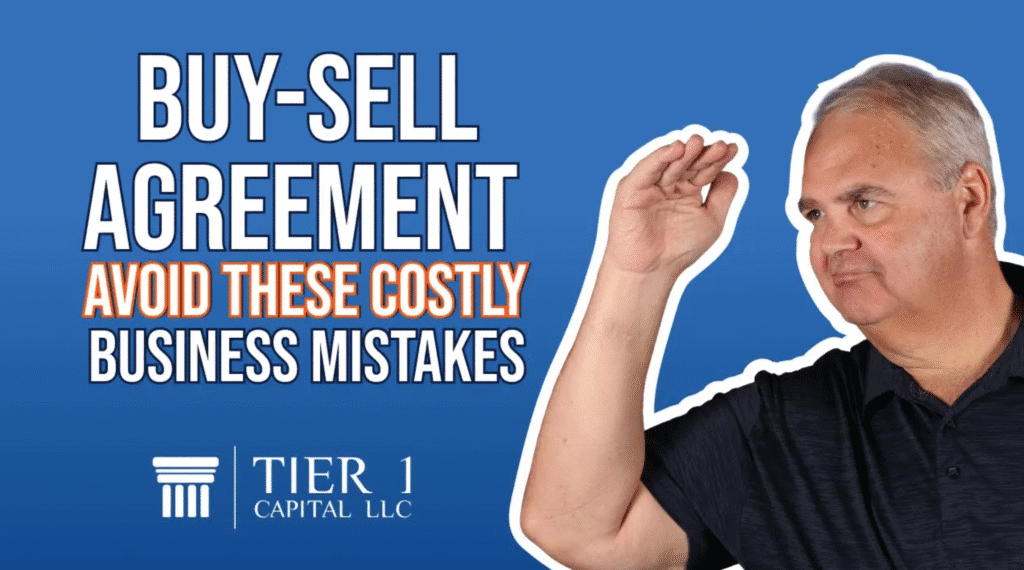
When you have a business partner, one of the most important things you can plan for is the death of that business partner. What’s going to happen to the business equity if your partner dies? The solution to that is a buy-sell agreement that defines exactly what will happen. But what many people fail to do is plan for the funding of that obligation and that’s exactly what we’re going to talk about today.
When it comes to setting up a buy-sell agreement, a lot of people don’t realize that they’re setting themselves up for a future obligation: how am I going to buy out my business partner’s equity?
The buy-sell agreement simply directs the surviving partner as to how much they owe and who they owe it to. It creates a financial obligation. What the agreement doesn’t do is set up the funding, and that’s where life insurance becomes essential.
If you have a business that’s worth $2 million and your partner passes away, where are you going to come up with $1 million to buy out their equity immediately?
That’s where life insurance steps in. Think about it: the event that causes the problem the death of a partner can also trigger the solution if you’re using life insurance. The insurance payout goes to the business or surviving partner at the exact moment it’s needed most.
Many business owners believe that the buy-sell agreement is the solution. They sign the paperwork and think they’re set. But if that piece of paper isn’t backed by a solid funding plan, the surviving partner could face serious financial trouble.
Some businesses say, “Well, we have cash reserves. We’ll just use that.” But that can be a huge mistake. You’re tying up a large chunk of capital for an event that may or may not happen soon meanwhile, that money could have been used to grow the business.
If you’re sitting on $1 million in cash reserves, that’s $1 million you’re not investing back into the company. That’s $1 million that’s not generating returns.
With life insurance, on the other hand, you’re paying pennies on the dollar to fund that obligation. You’re freeing up that $1 million to be productive inside your business.
And if you’re using a whole life insurance policy designed for cash value accumulation, you’re building up a private pool of capital along the way. It’s like setting aside money, but better because not only are you growing cash value that can be used during life, you also have the death benefit in place to protect your business when it matters most.
You’re essentially getting one dollar to do multiple jobs. That’s what makes businesses more efficient. That’s what puts you in control.
We always come back to the lens of control. Are you in control, or are you not?
Let’s examine the alternatives to using life insurance for buy-sell funding:
-
Cash Reserves – Ties up capital that could otherwise be used to grow the business.
-
Borrowing from a Bank – Requires paying principal plus interest. You’re repaying $1 million plus more.
-
Paying out of Cash Flow – Redirects operating income, weakening business performance and limiting your ability to reinvest.
All of these options reduce the efficiency and flexibility of your business.
With a properly funded and executed buy-sell agreement using life insurance, you have $1 doing multiple jobs. That same dollar is building a cash value pool you can borrow against while also funding the business succession plan. And best of all, you’re doing all of this with discounted dollars. You’re buying a guaranteed death benefit for pennies on the dollar, which is the definition of wholesale purchasing.
There’s absolutely no downside to that. You’re increasing efficiency, control, and long-term planning all with smart capital leverage.
If you’d like to learn more about how to put this strategy to work for your business and how to properly fund your buy-sell agreement, visit our website at www.tier1capital.com and click the “Schedule Your Free Strategy Session” today.
Thanks for reading, and remember it’s not how much money you make, it’s how much money you keep that really matters.
